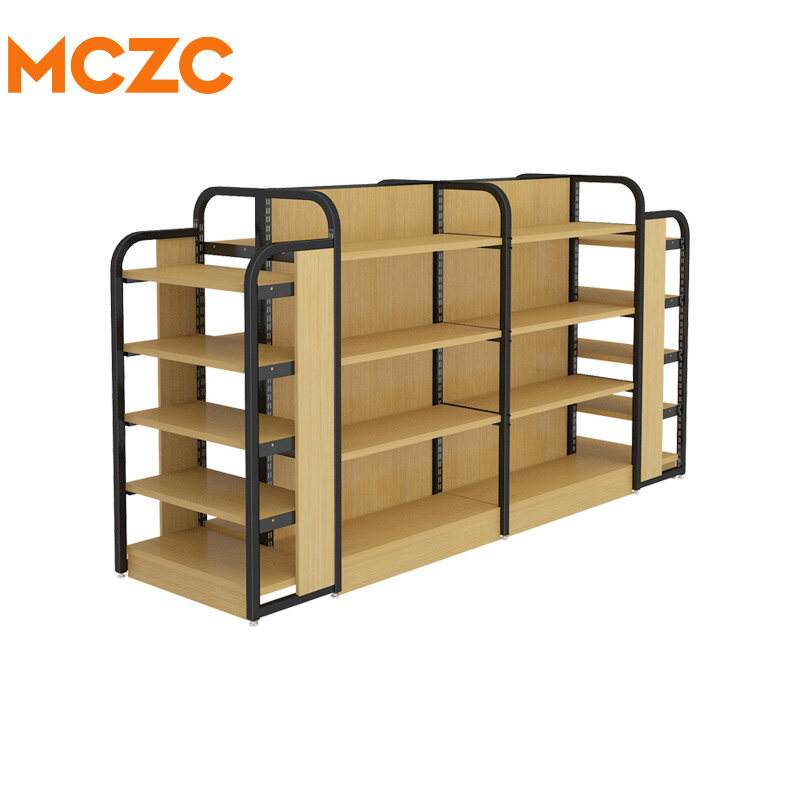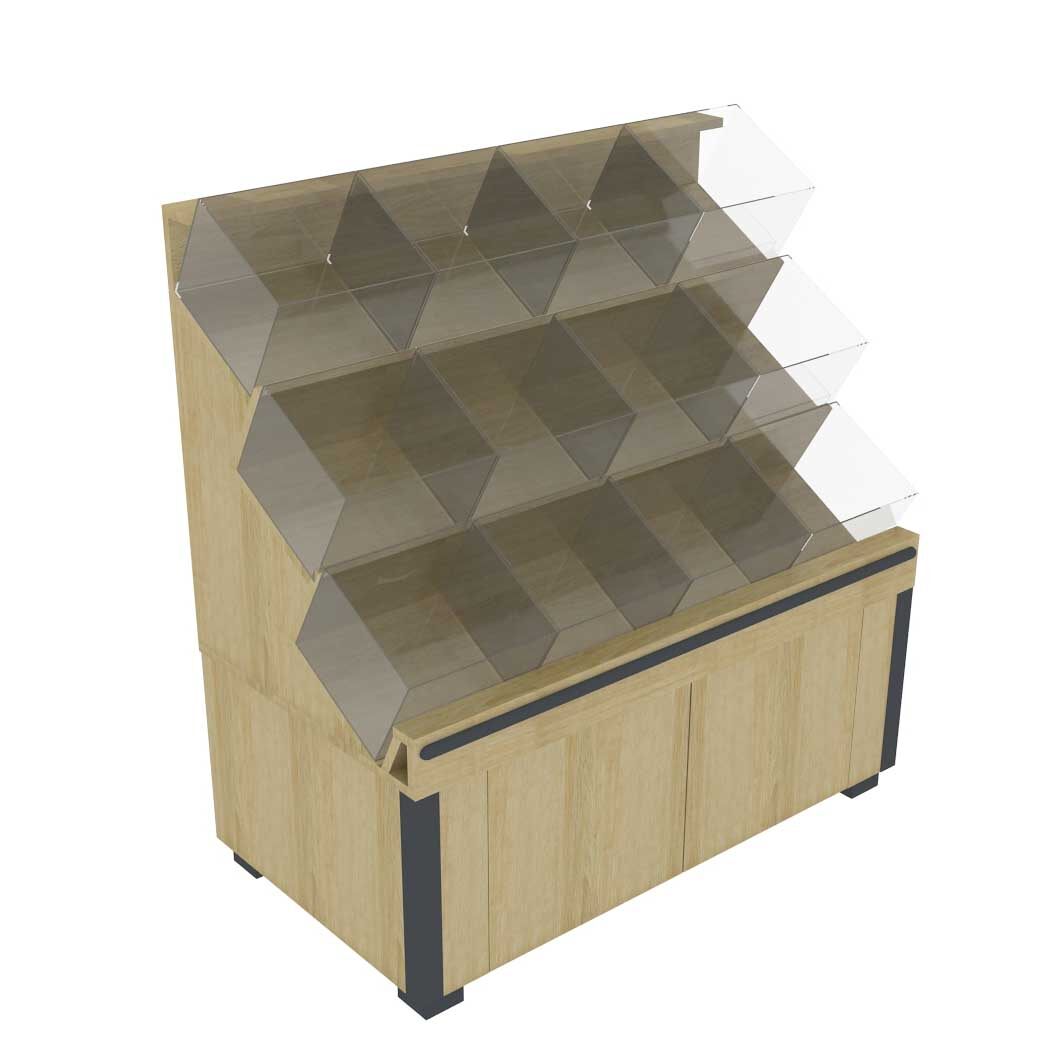Email format error
Email cannot be empty
Email already exists
6-20 characters(letters plus numbers only)
The password is inconsistent
Email format error
Email cannot be empty
Email does not exist
6-20 characters(letters plus numbers only)
The password is inconsistent

News

Maximizing Retail Space: The Ultimate Guide to Store Shelves and Supermarket Shelf Gondolas
Navigating the world of retail displays can be a daunting task, especially when it comes to optimizing your store layout with the right store shelves or supermarket shelf gondolas. These essential fixtures not only organize products efficiently but also enhance customer experience and drive sales. In this comprehensive guide, we’ll delve into the various aspects of selecting, arranging, and maintaining the perfect shelving solutions for your retail space.
I. Understanding Store Shelves and Supermarket Shelf Gondolas:
A. Definition and Purpose:
Store shelves and supermarket shelf gondolas are the backbone of product display in retail environments. They are designed to present merchandise in an organized, accessible, and visually appealing manner. The purpose of these shelving units is to maximize space, promote product discovery, and facilitate the shopping process.
B. Importance in Retail Environment:
The right shelving can make a significant difference in how customers perceive your store. It can create an inviting atmosphere, help manage inventory, and serve as a silent salesperson that guides customers through your product offerings.
C. Impact on Shopping Behavior:
Shelving layout and design can influence customer flow, dwell time, and purchasing decisions. Strategic placement of products can lead to increased impulse buys and higher overall sales.
II. Types of Retail Shelving Systems:
A. Wall Shelving:
Wall-mounted shelves save floor space and are ideal for displaying a wide range of products. They can be used to create a perimeter around your store, which is a common retail layout strategy.
B. Gondola Shelving:
Gondola shelving is a versatile, free-standing unit commonly used in supermarkets and retail stores. It consists of a flat base with vertical components featuring notches, pegboards, or slat walls to which shelves, bins, and hooks can be attached.
C. Endcap Displays:
Endcap displays are located at the end of aisles and are highly visible to shoppers. They are perfect for promoting new products, seasonal items, or special offers.
D. Pegboard Shelving:
Pegboard shelving features a board with pre-drilled holes that can accommodate hooks and brackets for hanging merchandise. It’s a flexible solution that can be easily reconfigured.
E. Specialty Shelving:
Specialty shelving is designed for specific products, such as wine racks, bookshelves, or clothing displays. These shelves cater to the unique needs of certain merchandise.
III. Selecting the Right Shelving for Your Store:
A. Assessing Your Product Line:
Consider the size, weight, and variety of your products when choosing shelving. Heavy items require sturdy materials, while smaller products might benefit from shelving with dividers or bins.
B. Considering Customer Flow:
Analyze the natural flow of traffic in your store to determine the best placement for your shelves. You want to guide customers through your space in a way that exposes them to a broad range of products.
C. Space Optimization:
Maximize your retail space by selecting shelving that fits your floor plan and allows for efficient use of vertical space. Gondola shelving, for example, can be used to create aisles and maximize product exposure.
D. Branding and Aesthetic Appeal:
Choose shelving that complements your store’s branding and design aesthetic. Consistency in materials, colors, and styles can reinforce your brand identity and create a cohesive shopping experience.
IV. Layout and Design Considerations for Store Shelves and Supermarket Shelf Gondola
A. Store Layout Basics
The layout of a store is critical in guiding customer flow and maximizing sales. A well-designed layout considers the placement of shelves to create an inviting atmosphere that encourages browsing and purchasing. The goal is to have a logical arrangement that leads customers from the entrance to high-margin products and impulse buys.
B. Creating a Pathway for Shoppers
Designing a clear pathway for shoppers helps prevent congestion and ensures that customers are exposed to a wide range of products. Pathways should be wide enough to accommodate shopping carts and groups of people, with clear signage to direct traffic.
C. Strategic Product Placement
Products should be placed strategically to maximize exposure and sales. High-demand and high-profit items are often placed at eye level, while complementary goods are placed nearby to encourage additional purchases. End caps and promotional displays are used to draw attention to specific products.
D. Accessibility and Ergonomics
Shelves should be designed with accessibility in mind, ensuring that products are within easy reach for all customers. Ergonomics plays a role in shelf height and depth, making sure that customers can comfortably browse without straining or crouching.
V. Maximizing Shelf Space and Product Visibility
A. Effective Merchandising Techniques
Merchandising techniques such as color blocking, thematic displays, and strategic product grouping can help maximize shelf space and product visibility. Products should be organized in a way that makes sense to the shopper and highlights the items effectively.
B. Use of Signage and Labels
Clear signage and labels help customers find products quickly and provide information about pricing and features. Good signage can also influence purchasing decisions and guide customers towards certain products.
C. Lighting to Highlight Products
Lighting is a powerful tool in retail, used to highlight products and create an inviting atmosphere. Spotlights, LED strips, and ambient lighting can all be used to draw attention to products and make them more appealing.
D. Rotating Displays for Seasonal Items
Seasonal items and promotions should be rotated regularly to keep the store looking fresh and relevant. Displays for these items are often placed in high-traffic areas to capture customer attention.
VI. Shelving Materials and Durability
A. Metal Shelving Options
Metal shelving is durable and versatile, suitable for heavy products and high-traffic areas. It is also easy to clean and maintain, making it a popular choice for many retailers.
B. Wood and Laminates
Wood and laminates offer a warm, natural look that can be more inviting than metal. They are often used in boutique stores or to create a specific aesthetic but may require more maintenance.
C. Plastic and Acrylics
Plastic and acrylic shelving is lightweight and can be molded into various shapes and sizes. It is often used for display cases and stands for smaller, lighter products.
D. Glass Shelving Considerations
Glass shelving adds a touch of elegance and is ideal for displaying high-end products. However, it requires careful handling, regular cleaning, and may not be suitable for heavy items.
VII. Maintenance and Upkeep of Store Shelves and Supermarket Shelf Gondola
A. Cleaning and Sanitization
Regular cleaning and sanitization of shelves are essential to maintain a hygienic environment and present products in the best light. This is especially important in food retailing and other sectors where cleanliness is paramount.
B. Regular Inspections for Safety
Shelves should be inspected regularly for safety, checking for signs of wear and tear, loose components, or damage that could pose a risk to customers and staff.
C. Repair and Replacement Strategies
A strategy for repairing and replacing shelving should be in place to address any issues promptly. This may involve keeping spare parts on hand or having agreements with suppliers for quick replacements.
D. Updating Shelving to Keep Up with Trends
Retailers should stay informed about the latest trends in shelving and consider updates to keep the store looking modern and appealing to customers.
VIII. Trends in Retail Shelving and Gondolas
A. Eco-Friendly Materials
There is a growing trend towards using sustainable and eco-friendly materials in retail shelving, such as bamboo, reclaimed wood, or recycled metal and plastic.
B. Technology Integration
Shelves are increasingly being integrated with technology, such as digital price tags, QR codes for additional product information, and interactive displays that engage customers.
C. Customization and Modular Designs
Customizable and modular shelving systems allow retailers to adapt their layout quickly and easily to meet changing needs and trends.
D. Interactive Display Solutions
Interactive displays, such as touchscreens and augmented reality, are being used to create engaging shopping experiences that can educate and entertain customers.
IX. Cost-Effective Shelving Solutions
A. Budgeting for Shelving
Retailers should budget for shelving by considering both the initial investment and the long-term value. Quality shelving that lasts longer may be more cost-effective over time.
B. Long-Term Investment Considerations
Investing in durable, high-quality shelving can reduce the need for frequent replacements and repairs, saving money in the long run.
C. Finding Deals and Discounts
Retailers can find deals and discounts by purchasing shelving during sales, buying in bulk, or opting for second-hand options in good condition.
D. DIY Shelving Projects
For smaller retailers or those with a tight budget, DIY shelving projects can be a cost-effective solution. However, safety and durability should not be compromised.
X. Case Studies: Successful Retail Shelving Strategies
A. Big-Box Retailers
Big-box retailers often use a combination of gondola shelving for flexibility and custom fixtures for branding. They focus on creating a consistent layout that can be replicated across multiple locations.
B. Boutique Stores
Boutique stores use shelving to create a unique shopping experience, often opting for custom designs and high-quality materials that reflect their brand identity.
C. Grocery Store Layouts
Grocery stores use a strategic layout with shelving designed for easy access to products and quick restocking. They often use a grid layout to maximize space and create a familiar environment for shoppers.
D. Pop-Up Shops and Temporary Installations
Pop-up shops and temporary installations use modular and lightweight shelving that can be easily transported and set up in different locations.
Conclusion:
In the dynamic world of retail, store shelves and supermarket shelf gondolas play a pivotal role in shaping the customer experience and driving sales. From the sturdy metal gondolas of big-box retailers to the bespoke wooden units of boutique stores, the right shelving strategy can transform a retail space into an efficient, inviting, and profitable environment. By understanding the various types of shelving systems, considering the layout and design, and staying abreast of the latest trends, retailers can create a space that not only showcases their products but also speaks to the needs and desires of their customers.
Whether you’re a seasoned retailer or new to the game, investing in the right shelving solutions is a cost-effective way to enhance your store’s appeal and functionality. By following the insights and strategies discussed in this guide, you can ensure that your store remains a vibrant and engaging space that customers are eager to return to. Remember, the ultimate goal is to provide a seamless shopping experience that marries aesthetics with practicality, leading to increased customer satisfaction and loyalty. With careful planning, regular maintenance, and a willingness to adapt to changing consumer behaviors, your store shelves and supermarket shelf gondolas will serve as the cornerstone of your retail success for years to come.

